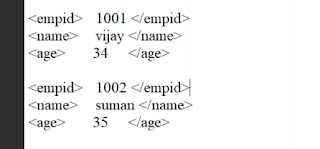Implementing and Creating a RFC destination for the RFC Function Module
Important Point related to RFC :-
- RFC function module is just like a function module created in the transaction code SE37, with some specific pre-requisites.
- The processing type of the function module should be remote-enabled module.
- All parameters must be pass by value
Creating a RFC Function Module :-
Requirement :-
Let’s take a requirement to display Sales Order Details from VBAK table on the basis of Sales Document Number ( VBELN ) given by user.
-
Step 1 :- Go to SE37 transaction code.
-
Step 2 :- Give a name for your function module and click on create button.
- Provide the above necessary details
-
Step 3 :- Click on save button
-
Step 4 :- Go to attributes tab and select Remote - Enabled Module.
-
Step 5 :- Go to import tab and give a parameter for a range of Sales document number and pass the range of Sales Document Number as its associated data type.
-
You will receive a popup message.
-
make sure all your parameters should be pass by value.
-
-
Step 6 :- We will pass the exporting parameter as a table type for a structure that we had created in the previous part for our VBAK table.
-
Step 7 :- Go to Source code and write the logic to fetch data in the exporting parameter.
Creating a RFC Connection :-
-
Step 1 :- Now we need to create a RFC destination for the device in which I will call the above created function module.
-
Since, I don’t have any other device, therefore I will create a RFC destination for my same system.
-
Step 2 :- Go to SM59 transaction code.
-
Step 3 :- Go to ABAP Connections.
-
Step 4 :- Click on create button to create a connection → A pop up screen will appear where you need to provide the necessary details.
-
Step 5 :- Press enter. Here, provide the description.
-
Step 6 :- Provide the target host.
-
Step 7 :- Click on Logon and Security and provide the access credentials.
-
Step 8 :- Click on connection Test to check whether RFC connection has been done or not.
- We can see that RFC connection has been done completely.
- Now we can use it.
.png)
.png)
.png)
.png)
.png)
.png)
.png)
.png)
.png)
.png)
.png)
.png)
.png)
.png)

Comments
Post a Comment